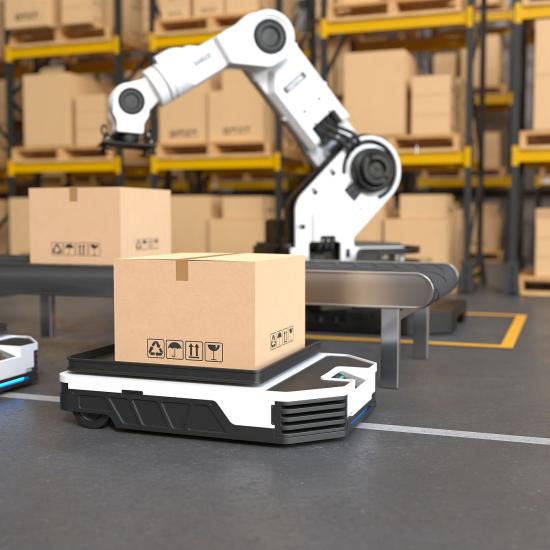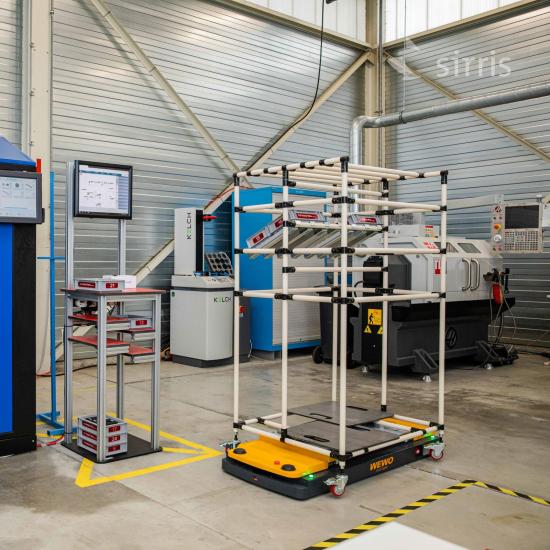As optimisation of internal production logistics is crucial to become more agile, companies are still struggling with the fact that integrating a task-driven autonomous mobile robot solution is very complex, the loading and unloading is still too slow and it is difficult to combine systems of different brands. An newly developed demonstrator will show a solution for these challenges, that can be reproduced in your own facility.
The shift from mass production to the production of more complex customized products with higher added-value in ever smaller batches and with ever smaller lead-times, results in an increased complexity in production. In order to survive, especially in high-wage regions, this complexity needs to be managed and, consequently, production systems need to become smarter and more agile. Recent studies and inquiries clearly indicate that, besides flexible automation of the production processes, optimization of internal production logistics is crucial in becoming more agile. It can indeed be observed that the way that the internal production logistics are currently organised are the bottleneck for becoming more flexible.
Seizing the opportunity with AMRs
The trend to ever smaller batches with ever smaller lead-times results in increasing complexity in manufacturing. More and more, the current flexible production systems must be complemented by digitization and automation of internal logistic processes to achieve the necessary agility in production. Fortunately, recent technological developments within the field of autonomous mobile robots (AMRs - the recent name for 'automated guided vehicles' or AGVs) offer opportunities to flexibly automate internal logistics operations at an affordable/acceptable cost. However, different specific logistic challenges first need to be solved to assure a broader implementation of those technologies in the EU manufacturing industry. Although AMRs allow logistic automation, the control of the tasks to be performed is too complex, loading and unloading is too slow (docking), the AMR is only a basic platform without automated handling solutions and it is difficult to combine systems of different brands. As a result, the ROI is unclear, preventing implementations at SMEs.
A new project aims to tackle some of the challenges by constructing a prototype and implementing and testing it on an industrial use-case at Altachem through the development of a proof-of-concept demonstrator.
Proof-of-concept demonstrator
Within the Trinity project,that started in July 2020, Sirris, Flagstone and Altachem want to find a solution for optimising internal logistics, to increase production capacity per square metre and move operator focus to add-value tasks. The project partners will demonstrate both technological and economic feasibility of implementing AMRs on SME shop floors for the flexible production of smaller series (EU SME challenge). Flagstone will develop software tools that allow event-driven orchestration of AMRs, driven by ERP/WMS, PLC and operator input. A modular structure will enable to easily extend new orchestration implementations and hardware of other brands.
Sirris will develop the necessary automation add-ons to allow easy docking, loading and unloading of AMRs. These prototype solutions will be implemented and tested in a demonstrator at Altachem.
Want to know more about the Trinity project? Read further on the project page!





